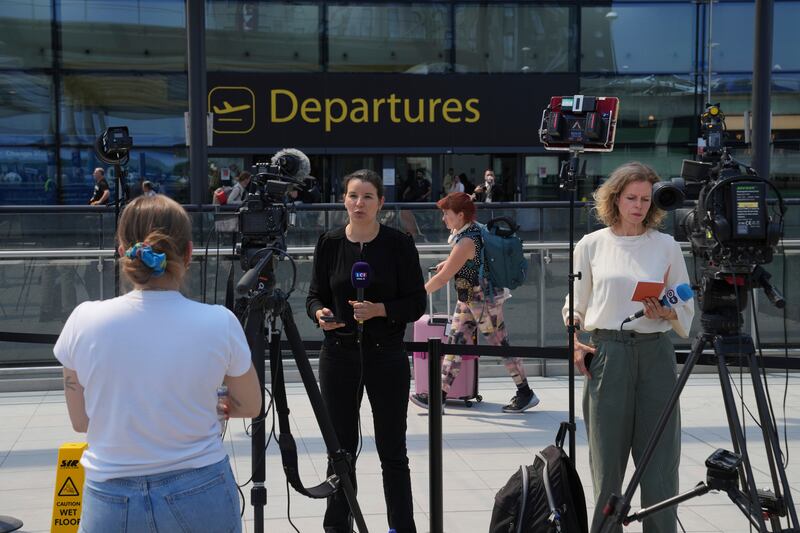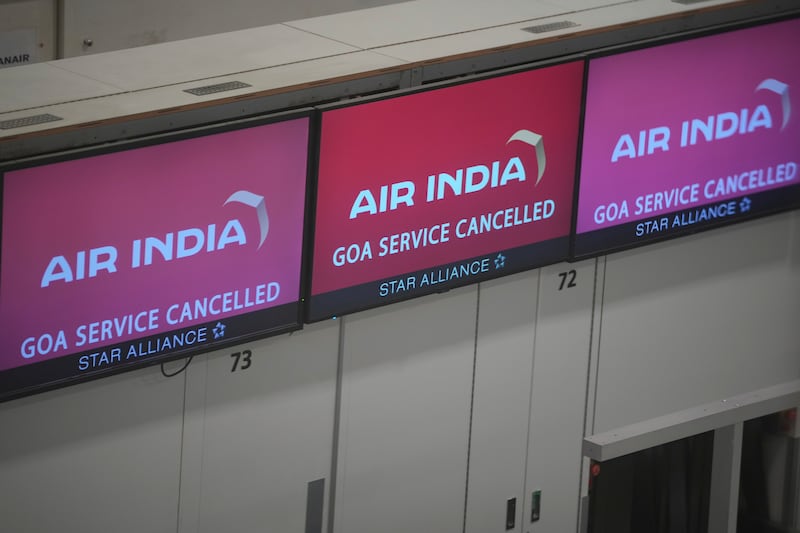Say what you want about The New York Times, but the nation’s newspaper of record showed remarkable reserve in its coverage of the horrific Air India crash, posting video of the jet that only showed its ominous descent after takeoff, not the subsequent explosion.
Not everyone else showed such restraint, including CNN, which repeatedly aired video that first emerged on social media, with a largely useless label that said “Warning: disturbing images.”
At least CNN tried, even though someone glancing up at a TV screen in, say, a waiting room at the dentist, would barely have time to register the warning and avert their eyes. It turned out, though, that the explosion, disturbing as it was to watch — especially knowing that families who had just dropped their loved ones off had seen it in real time — wasn’t the worst of what would show up on social media.

It was like a race to the bottom on X, of who could post the most horrific scenes from the aftermath of the crash. Social media is often described as a cesspool because of the vitriol there, but today, the worst thing about social media wasn’t the hate, but the cellphone video.
In one video that flashed across my X feed, people in Ahmedabad were gathered around what seemed to be a scalp on the street, or maybe it was a severed head — I chose not to investigate further. The people weren’t just looking at what was on the ground — they were filming. It was not “citizen journalism” at its finest.
We have been awash in “disturbing images,” of course, ever since we learned to capture images for posterity. What disturbed us today wasn’t any worse than Nick Ut’s 1972 Pulitzer Prize winning photograph of crying children running after being burned by napalm, or video of the planes hitting the World Trade Center, or the other dozens of photographs that show up if you search for “most disturbing photographs” on Google.
What’s most disturbing of all is that they have become not just historical records, but monetizable “content” in the attention economy. The people posting horrific video from the scene weren’t doing so for any noble purpose — there is no “X account of record” — but to garner attention for themselves.
This is not to say that the media revolution that is unfolding is not necessary and important, but that tragedies bring out both the best of human beings and the worst, and the worst sometimes shows up via an uplifted cellphone.
The rise of social media has the legacy media fighting for survival, and “breaking news” is breaking ever faster, with no gatekeepers to look over what is shared and to evaluate whether it really needs to be shared, whether it should be edited or withheld, because not everything that happens in the world is something everyone is entitled to know.
None of us were entitled to know about that scalp.

Lately, I’ve been noticing that many of the “breaking-news alerts” that I get from The New York Times and other news organizations arrive after I’ve already learned of the news on social media. But this is not necessarily because the legacy media is slow, but because there is usually some vetting involved, some measured judgment about accuracy and propriety. It’s not just someone with a cellphone uploading his video to the internet as fast as he can.
The moral isn’t “legacy media good, social media bad.” Both have their own serious problems, and the consumer of any sort of media is ultimately responsible for the words and images we choose to allow in our homes, on our screens, in our brains. More than ever, let the viewer beware.
No picture is worth a thousand nightmares.


